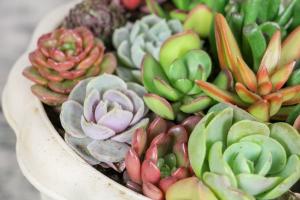Introduction
Pruning tomato plants can have a significant impact on the yield and quality of the crop. Proper pruning ensures that the plants receive the necessary airflow, light, and nutrients. However, pruning can also have some drawbacks if not done correctly. This article will explore the question of how much tomato plants should be pruned.
Factors to Consider When Pruning Tomato Plants
Before deciding on the amount of pruning needed for tomato plants, several factors need to be taken into account. The plant varieties, the growing location, and the desired yield are some of the factors that require consideration.
Types of Tomato Plants
There are two primary types of tomato plants: determinate and indeterminate. Determinate varieties grow to a specific height and produce a single crop of fruit, after which the plant dies. Indeterminate plants, on the other hand, continue to grow and produce fruit until they experience frost or other unfavorable conditions. Determinate plants usually require less pruning because they grow to a predetermined size. Indeterminate plants, however, may require more pruning to manage their size and maintain healthy foliage.
Growing Conditions
Another factor to consider when deciding how much to prune tomato plants is the growing conditions. Plants grown in areas with high humidity or frequent rainfall may require more pruning than those grown in drier climates. This is because the excess moisture can lead to fungal diseases that thrive in warm and moist environments. Pruning helps to reduce the moisture levels around the foliage by increasing air circulation, making it harder for fungi to develop.
Desired Yield
The amount of pruning that is needed for tomato plants depends on the desired yield. Growers who want a high yield of large fruit should consider pruning more heavily. Removing some of the leafy growth from the plants helps to direct more energy towards the developing fruit. However, pruning too much can lead to excessive stress on the plant, causing it to go into shock, and affecting the final yield. Pruning should be done in small increments and monitored to avoid shock.
Pruning Techniques
The two primary pruning techniques for tomato plants are topping and side pruning. Topping or removing the top of the plant, encourages bushier growth and larger fruit. Side pruning involves removing the lateral shoots or suckers that sprout from the base of the leaf stems. Removing suckers helps to reduce leafy growth, directing more resources to the fruit. Over-pruning, however, can cause the plant to become weak and affect the overall yield.
Conclusion
Pruning tomato plants is an essential aspect of managing their growth and ensuring a healthy crop. The amount and frequency of pruning depend on the type of plant, the growing conditions, and the desired yield. Pruning should be done in small increments and monitored to avoid stressing the plant. By following the right pruning techniques and maintaining proper growing conditions, you can increase the yield and quality of your tomato crop.

 how many times do yo...
how many times do yo... how many planted tre...
how many planted tre... how many pine trees ...
how many pine trees ... how many pecan trees...
how many pecan trees... how many plants comp...
how many plants comp... how many plants can ...
how many plants can ... how many plants and ...
how many plants and ... how many pepper plan...
how many pepper plan...
































